Around the World with Us: A Taste of Southeast Asia and New Zealand
Here at Cab Hospitality, we like to stand by the fact that we live and breathe food, travel, and authentic experiences. Whether we’re working with a boutique hotel in Devon or a busy restaurant chain in central London, we’re endlessly passionate about supporting hospitality and about trying as many new things as possible along the way. So when our Content Marketing Executive, Neeve, took some time off to travel through New Zealand and Southeast Asia, we couldn’t wait to hear what she’d eaten, where she’d stayed, and what hospitality lessons she might bring back with her.
Here’s a roundup of some of the incredible culinary highlights and hospitality discoveries, proving that wherever we go in the world, we’ll always be cheering on the local hospitality industry.

Camper Van Camping
After spending a few weeks touring New Zealand’s North Island by camper van, there is undeniably something that sets Aotearoa apart from other destinations: while cities have their fair share of hotels and hostels, New Zealand is truly built for camper tourists. With a huge range of camper van rental options to suit every type of traveller, campsites are dotted across the country, many in spectacular settings with breathtaking views of mountains, lakes, beaches, or rolling farmland.
These sites often offer laundry facilities, communal kitchens, hot showers, and social spaces, making it easy to meet fellow travellers and enjoy a real sense of community on the road. Having your bedroom on wheels with all your essentials close by feels wonderfully free: a cosy and flexible alternative to the traditional hotel experience.
One particular highlight was the Orongo Bay Holiday Park, near the historic town of Russell. This environmentally conscious campsite doubles as a nature reserve known for its thriving birdlife. Lucky visitors can even spot New Zealand’s native kiwi bird in the evening with a red light torch.
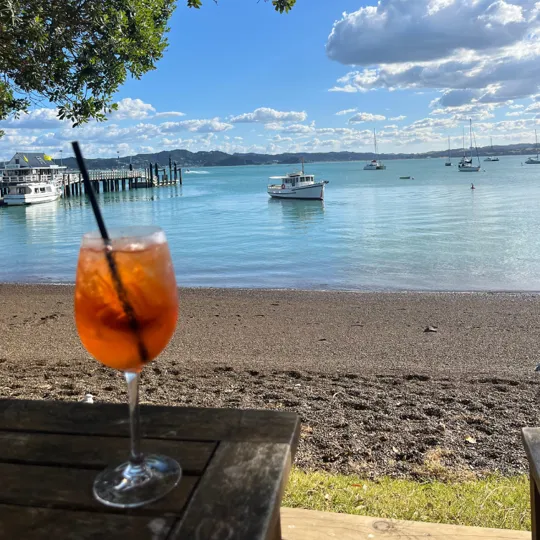
The Duke of Marlborough, Russell, New Zealand
The historic Duke of Marlborough Hotel in Russell proudly holds the country’s first liquor licence, granted way back in 1827. Known for “refreshing rascals and reprobates since 1827,” Everyone in Russell recommended “The Duke”, and with a steady stream of tourists staying at the hotel, locals dining in the restaurant and parties hosted in their venue spaces The Duke of Marlborough is a living testament to how a venue’s heritage can be woven into its branding, storytelling, and hospitality.
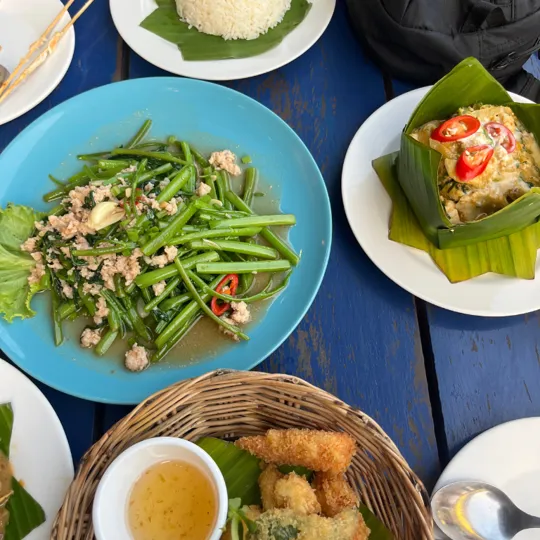
Cambodian Favourites: Amok Curry and Morning Glory
Over in Cambodia, tourists and locals love the classic fish amok curry: a slightly mousse-like, fragrant dish similar to Thai green curry, usually steamed in banana leaves, alongside the ever-popular stir-fried morning glory with minced pork. These dishes are Southeast Asian staples that blend local herbs, spices, and textures. They highlight how food in the region is all about fresh, bright, balanced flavours, and how menus grounded in traditional recipes can still feel innovative and exciting to visitors keen to experience traditional flavours.
However, another thing to note is how every establishment feels genuinely warm and welcoming, often run by families across multiple generations. Instead of the more formal restaurant etiquette we’re used to in the UK, these places make you feel like part of the family, inviting you in with a sense of familiarity and heartfelt hospitality.
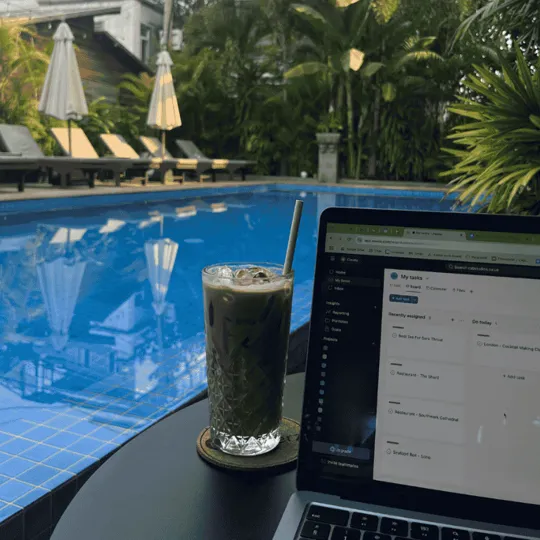
Poolside Working at Onederz Siem Reap
Also in Cambodia, you will find a huge selection of local hostels, and Onederz Hostel Siem Reap is one of Southeast Asia’s most beloved backpacker hostel chains. Priced at just £4.50 per person for this particular branch, Onederz offers the kind of experience that truly raises the bar for budget hospitality.
Three pools (including a rooftop pool), a fully stocked bar, restaurant, daily excursions, laundry service, and nightly social events all for £4.50pp per night feels almost too good to be true. Plus, with the opportunity to got a bit of poolside work in between adventures, hostels are the perfect illustration of how to adapt to digital nomads by blending affordable accommodation with resort-style amenities. It’s a trend we see increasingly: high-quality, community-focused stays at a fraction of hotel prices, proving that experience can matter more than stars.
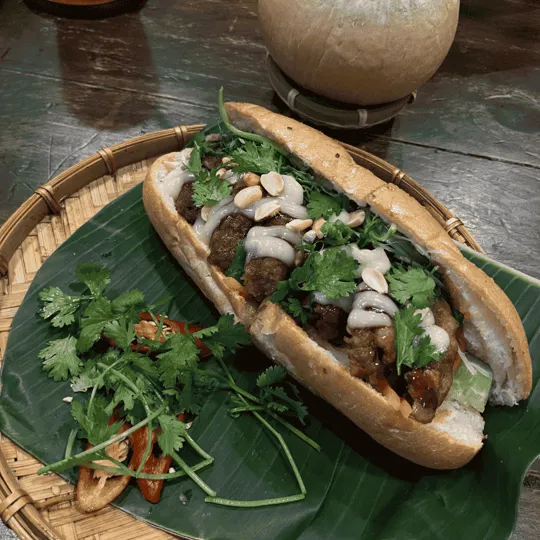
Vietnam’s Bánh Mì Love Affair
There’s nothing like a Vietnamese bánh mì. A crusty, light baguette stuffed with spiced meats, herbs, pickled veg, and sauces that pack a serious flavour punch. You’ll find them all over Vietnam; however, one of the best was found at Bánh Mì Mẹ Ỉn in Ho Chi Minh City, a small indoor market stall that stuck solely to its variations on the beloved sandwich.
However, further north in Hội An, you will find Bánh Mì Phượng, made famous by Anthony Bourdain, who called their bánh mì a “symphony in a sandwich” on No Reservations. With its huge outdoor queue and efficient service window, this spot shows how one dish done incredibly well (with history, simplicity, and consistency) can build global acclaim.
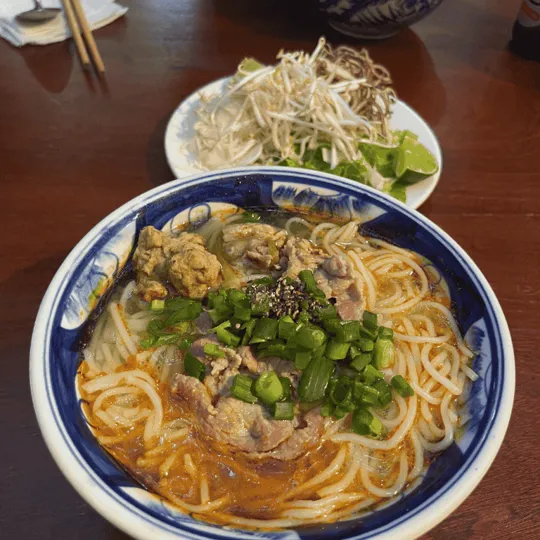
Bún bò Huế: A Taste of Royal Vietnam
In central Vietnam, you will find a popular, regional dish called bún bò Huế, a bold, aromatic noodle soup originating from the former royal city of Huế. Combining beef, pork knuckles, chả lụa (Vietnamese sausage), and a rich, lemongrass-heavy broth, this dish is a testament to how flavourful, regional cooking tells a cultural story.
Much like Vietnam’s famous pho, its blend of spice, shrimp paste, and aromatics is deeply connected to local identity, reminding us how traditional dishes do not need to be reworked or reinvented to still be beloved and can even elevate a restaurant’s sense of place.

A Little Slice of England in Vietnam
With so many differences in terms of local culture, it can be strange and oddly comforting to stumble across a slice of home somewhere so far away. In Da Lat, Vietnam, The Classic Pub is a venue dishing out English classics, pizzas, and cocktails in a setting that felt halfway between a New Orleans jazz bar and a London pub. Surrounded by an array of traditional Vietnamese restaurants, The Classic Pub shows how fusion concepts and international influences can thrive when executed authentically, drawing in locals and tourists alike who crave something a little different.
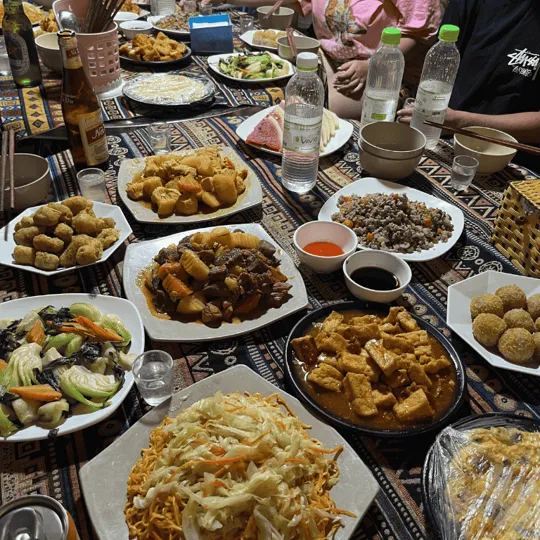
Family-Style Dining: Community at the Heart of the Table
The Ha Giang Loop is a famous motorbike tour that takes you through the Viet-Chinese border. On this tour, you get to see so much more of rural Vietnam, life in the furthest stretch of the north, and enjoy meals as a local. It was here, in many small towns and villages on the border of Vietnam and China, that you can enjoy a classic family-style meal, where multiple dishes are placed in the middle of the table, and everyone helps themselves until satisfied.
While not a new concept at all, this way of dining encourages conversation, sharing, and a sense of community, turning strangers into new friends. Values that could inspire many UK restaurants to move away from the one-plate-per-person mindset and towards a more social, shared experience, especially if there is no other competition doing the same thing.
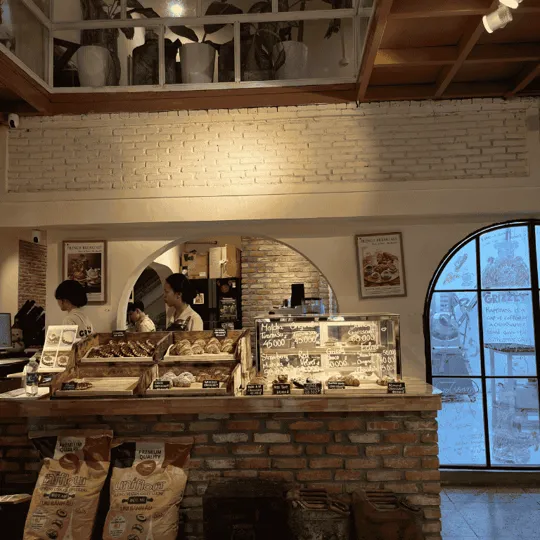
Vietnamese Salt Coffee: A Surprise Star
Perhaps one of the most unexpected culinary highlights of the trip was discovering Vietnamese salt coffee: a bold Robusta coffee topped with a creamy, lightly salty foam of fresh cream, milk, condensed milk and a pinch of salt. The salt acts almost like a salted caramel, perfectly balancing the bitter edge of the coffee when mixed together. It was created by a couple in Hue who owned a cafè and it’s a brilliant example of local ingenuity: taking a familiar item and adding a surprising twist that feels unique, memorable, and truly regional.
What can we learn?
If there’s one takeaway from Neeve’s travels, it’s this: hospitality is universal, available in so many different flavours and fonts. Whether it’s back-to-basics camping that ‘does the job’ yet still goes above and beyond, budget hostels offering resort-style amenities, century-old hotels preserving local character, or street food stalls serving up innovative drinks or age-old local favourites, every touchpoint in hospitality contributes to the same mission: making people feel welcome, valued, and eager to return.